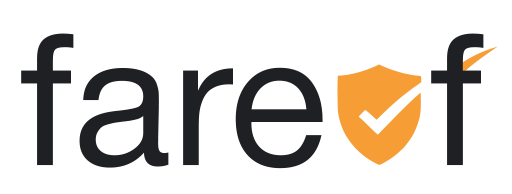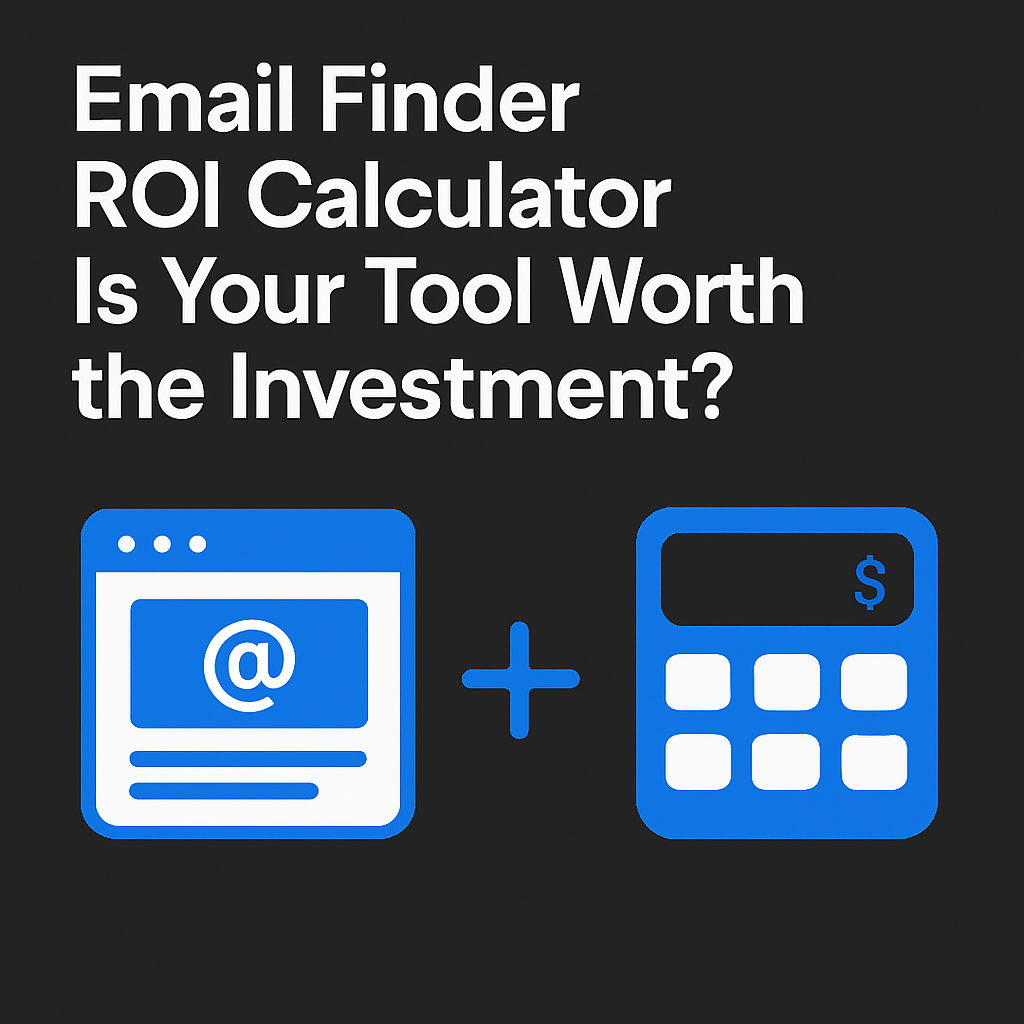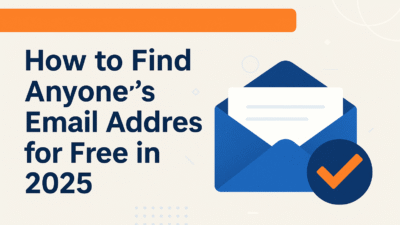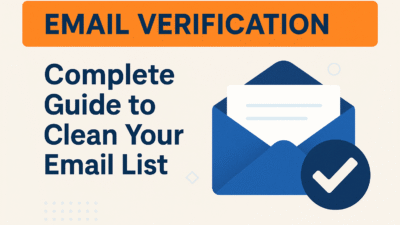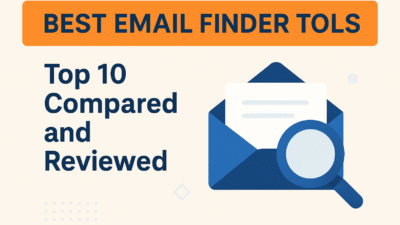TL;DR
Justifying email finder tool investments can be challenging when costs are obvious but benefits remain hidden in improved productivity, better data quality, and increased sales outcomes. Most organizations struggle to quantify the true value of email finding tools beyond simple subscription costs, missing crucial factors that determine whether these investments actually deliver positive returns.
The reality is that email finder ROI extends far beyond simple cost-per-contact calculations to include time savings, opportunity costs, data quality improvements, and long-term sales impact. Without comprehensive analysis, businesses often make suboptimal decisions that either waste money on unnecessary premium features or miss opportunities for significant productivity gains.
Understanding email finder ROI requires systematic evaluation of both direct costs and hidden benefits across multiple dimensions including productivity improvements, sales effectiveness, data quality enhancements, and risk mitigation. The most successful organizations use structured frameworks to evaluate these investments and optimize their email finding strategies for maximum business impact.
This comprehensive guide provides proven methodologies for calculating email finder ROI, evaluating tool options, and optimizing investments for maximum business value. We’ll explore direct cost analysis, productivity calculations, opportunity cost assessment, and long-term strategic value to help you make informed decisions about email finding tool investments.
Whether you’re evaluating initial tool selection, considering upgrades to premium services, or optimizing existing email finding strategies, these frameworks will help you quantify value and build compelling business cases for the right investments.
Understanding Email Finder Investment Components
Comprehensive ROI analysis requires understanding all cost components and value drivers associated with email finding tool investments, including both obvious expenses and hidden factors that significantly impact total returns.
Direct Cost Categories
Email finder investments include multiple cost categories that must be considered together to understand true investment requirements and calculate accurate ROI.
Subscription and licensing costs represent the most obvious expense category, including monthly or annual fees for email finding software, API access, and premium feature tiers that vary significantly based on usage volume and capability requirements.
Implementation and setup expenses include initial configuration, integration development, team training, and workflow design that can represent significant upfront investments, particularly for enterprise deployments with complex requirements.
Ongoing operational costs encompass verification services, data storage, bandwidth usage, and maintenance activities required to keep email finding systems running effectively over time.
Support and training investments include customer support subscriptions, advanced training programs, and consulting services that help teams maximize tool effectiveness and avoid costly mistakes.
Compliance and security expenses cover additional security measures, compliance monitoring, audit support, and legal consultation required for regulated industries or international operations.
Hidden Cost Factors
Many email finder costs remain hidden until organizations begin serious implementation, making initial ROI calculations misleadingly optimistic without proper analysis.
Integration complexity costs arise when email finders don’t connect seamlessly with existing CRM systems, marketing automation platforms, or sales workflows, requiring custom development or workaround solutions.
Data quality management expenses include verification services, list cleaning, duplicate removal, and ongoing maintenance required to keep email databases accurate and compliant.
Opportunity costs from tool switching, learning curves, and productivity disruption during implementation can significantly impact ROI, particularly for large teams or complex deployments.
Scalability limitations may force expensive tool changes as organizations grow, making initial cost savings misleading when long-term requirements are considered.
Vendor dependency risks include potential price increases, service changes, or discontinuation that could force costly migrations or workflow changes without warning.
Value Creation Mechanisms
Email finder tools create value through multiple mechanisms that must be quantified systematically to calculate accurate ROI and justify investment decisions.
Time savings and productivity gains represent the most immediate value creation through reduced manual research, automated data entry, and streamlined prospecting workflows that free up sales teams for high-value activities.
Data quality improvements enhance campaign effectiveness, reduce bounce rates, improve deliverability, and increase conversion rates through access to accurate, verified contact information.
Opportunity expansion enables access to previously unreachable prospects, faster market entry, and broader stakeholder engagement that directly impacts pipeline growth and revenue generation.
Risk mitigation through compliance features, data security, and reputation protection provides value that may not be immediately visible but protects against significant potential losses.
Strategic capabilities like competitive intelligence, market research, and customer expansion enable new business opportunities and strategic advantages that compound over time.
ROI Calculation Frameworks
Systematic ROI calculation requires structured frameworks that account for all relevant costs and benefits while providing clear, defensible analysis for investment decisions.
Basic ROI Formula Application
The fundamental ROI calculation provides a starting point for email finder investment analysis, though it must be enhanced with comprehensive cost and benefit identification.
ROI = (Total Benefits – Total Costs) / Total Costs × 100
This basic formula requires careful definition of “benefits” and “costs” to provide meaningful results. Benefits must include both direct value creation and avoided costs, while costs must encompass all investment requirements over the evaluation period.
Time horizon considerations significantly impact ROI calculations since email finder benefits often compound over time while costs may be front-loaded during implementation phases.
Benefit quantification challenges require converting productivity improvements, quality enhancements, and strategic advantages into monetary values that can be compared against investment costs.
Cost allocation methods must fairly distribute shared costs like integration development or team training across multiple tools or departments to avoid double-counting or unfair attribution.
Baseline establishment requires measuring current performance without email finder tools to accurately attribute improvements and calculate incremental benefits from tool investment.
Time-Based Value Analysis
Understanding how email finder value changes over time helps optimize implementation strategies and set realistic ROI expectations for different evaluation periods.
Immediate value capture includes quick wins like reduced research time and improved data accuracy that provide immediate returns on investment during the first weeks or months of usage.
Medium-term productivity gains emerge as teams become proficient with tools, workflows mature, and integration benefits compound to create more significant productivity improvements.
Long-term strategic value develops through improved market intelligence, expanded opportunity identification, and strategic capabilities that support business growth and competitive advantages.
Learning curve impacts must be factored into ROI calculations since initial productivity may decrease during training periods before improving significantly as teams master new tools and workflows.
Compound benefit effects occur when email finder capabilities enable other improvements like better targeting, more effective campaigns, and enhanced customer relationships that create additional value beyond direct tool benefits.
Comparative Analysis Methods
Comparing different email finder options requires systematic evaluation frameworks that consider total cost of ownership and comprehensive value creation across multiple tools and scenarios.
Feature-weighted scoring assigns values to different capabilities based on organizational priorities, enabling fair comparison between tools with different feature sets and pricing models.
Total cost of ownership analysis includes all costs over the full evaluation period, not just subscription fees, to provide accurate comparison between solutions with different cost structures.
Break-even analysis identifies the minimum performance improvements required to justify investment costs, helping evaluate whether realistic benefits can achieve positive ROI.
Scenario modeling evaluates ROI under different usage levels, growth rates, and market conditions to understand investment risks and potential returns under various circumstances.
Competitive benchmarking compares organizational performance and costs against industry standards to identify improvement opportunities and validate ROI assumptions.
Risk-Adjusted ROI Calculations
Sophisticated ROI analysis incorporates risk factors that could impact investment returns, providing more realistic projections and better-informed decision making.
Probability-weighted scenarios assign likelihood estimates to different outcome scenarios, creating expected value calculations that account for uncertainty in benefit realization.
Sensitivity analysis evaluates how changes in key assumptions like usage volume, conversion rates, or cost structures affect ROI calculations to identify critical success factors.
Monte Carlo simulation uses statistical modeling to evaluate thousands of potential scenarios, providing probability distributions for ROI outcomes rather than single-point estimates.
Risk mitigation value quantifies the value of avoiding potential losses through compliance features, data security, and reputation protection that email finder tools provide.
Option value analysis considers the strategic value of building email finding capabilities that enable future opportunities, even if immediate ROI appears marginal.
Productivity Impact Assessment
Measuring productivity improvements from email finder tools requires systematic tracking of time savings, efficiency gains, and quality improvements across sales and marketing activities.
Time Savings Quantification
Accurate time savings measurement provides the foundation for productivity-based ROI calculations and helps identify optimization opportunities for maximum impact.
Baseline time tracking measures current manual research processes including prospecting time, data entry requirements, and verification activities to establish comparison benchmarks.
Task-level analysis breaks down email finding activities into specific components like prospect identification, contact discovery, verification, and data entry to identify where automation provides the greatest value.
Team-wide measurement aggregates individual time savings across all users to calculate organization-wide productivity improvements and total value creation from email finder investments.
Quality time vs. quantity time distinguishes between time spent on high-value activities and administrative tasks to ensure productivity measurements reflect meaningful improvements in business outcomes.
Seasonal and cyclical variations account for changing prospecting intensity and market conditions that affect how much time savings translate into business value throughout the year.
Efficiency Improvement Metrics
Beyond simple time savings, email finder tools create efficiency improvements through better data quality, reduced errors, and enhanced workflow automation.
Contact accuracy improvements reduce time spent on bounced emails, incorrect information, and prospect verification while improving campaign effectiveness and conversion rates.
Workflow automation benefits eliminate manual handoffs, reduce context switching, and streamline processes to create efficiency gains beyond simple task-level time savings.
Error reduction value quantifies the cost of mistakes prevented through better data quality, automated verification, and reduced manual data entry processes.
Research quality enhancement measures improvements in prospect intelligence, contact completeness, and targeting accuracy that enable more effective sales and marketing activities.
Scalability efficiency evaluates how email finder tools enable handling increased prospect volumes without proportional increases in time investment or resource requirements.
Opportunity Cost Analysis
Understanding what sales teams can accomplish with time freed up by email finder automation helps quantify the true value of productivity improvements.
Revenue-generating activity increases measure how much additional time can be dedicated to prospect engagement, relationship building, and deal closure activities that directly impact revenue.
Strategic activity enablement quantifies value from increased time available for market research, competitive analysis, and strategic planning that supports long-term business growth.
Skill development opportunities consider how reduced administrative burden enables team members to focus on developing higher-value skills and capabilities.
Capacity expansion analysis evaluates whether productivity improvements enable handling larger territories, more prospects, or additional responsibilities without additional headcount.
Stress reduction and retention benefits account for improved job satisfaction and reduced turnover from eliminating frustrating manual tasks and enabling focus on more rewarding activities.
Quality Impact Measurement
Email finder tools often improve work quality in addition to quantity, creating value through better outcomes rather than just faster processes.
Contact accuracy rates measure improvements in email deliverability, contact reachability, and information correctness that directly impact campaign effectiveness and sales outcomes.
Targeting precision enhancement evaluates how better prospect intelligence and contact information improve campaign relevance and response rates.
Personalization capability improvements assess how access to better contact and company information enables more effective personalized outreach and relationship building.
Campaign effectiveness metrics track improvements in open rates, response rates, and conversion rates that result from better contact data and targeting capabilities.
Long-term relationship quality measures whether improved initial contact accuracy and intelligence leads to stronger, more valuable customer relationships over time.
Cost-Benefit Analysis Models
Comprehensive cost-benefit analysis requires sophisticated models that capture all relevant factors while providing clear, actionable insights for investment decisions.
Direct Financial Impact Calculations
Quantifying direct financial impact provides the clearest ROI justification and helps prioritize investments based on measurable business outcomes.
Revenue attribution modeling tracks how email finder-discovered contacts contribute to pipeline generation, deal closure, and revenue growth to demonstrate direct financial impact.
Cost avoidance calculations quantify expenses prevented through better data quality, reduced manual labor, and avoided mistakes that would otherwise require correction or recovery efforts.
Efficiency savings valuation converts time savings into monetary value using fully-loaded employee cost rates including salary, benefits, overhead, and opportunity costs.
Market expansion value estimates revenue potential from accessing new markets, customer segments, or geographic regions enabled by improved contact discovery capabilities.
Customer lifetime value improvements assess how better initial contact and relationship development affect long-term customer value and retention rates.
Indirect Value Creation Assessment
Many email finder benefits create indirect value that may be difficult to quantify but significantly impacts overall business performance and competitive position.
Brand reputation enhancement through better targeting, reduced spam complaints, and more professional outreach that protects and enhances organizational reputation in target markets.
Competitive intelligence value from improved access to competitor information, market intelligence, and industry insights that support strategic decision making and competitive positioning.
Team morale and retention benefits through reduced frustration with manual tasks, improved job satisfaction, and enhanced ability to focus on meaningful work that adds value.
Scalability option value from building capabilities that enable future growth without proportional cost increases or operational complexity.
Learning and improvement opportunities enabled by better data and analytics that support continuous optimization and strategic refinement over time.
Scenario Planning and Sensitivity Analysis
Robust cost-benefit analysis considers multiple scenarios and tests sensitivity to key assumptions to provide realistic projections and risk assessment.
Best case scenario modeling evaluates maximum potential returns under optimal conditions to understand upside potential and justify investment in premium capabilities.
Worst case scenario planning assesses minimum expected returns and downside risks to ensure investments remain viable even under challenging conditions.
Most likely outcome projections provide realistic expectations based on historical performance and industry benchmarks for similar implementations.
Break-even sensitivity testing identifies how changes in key variables like usage volume, success rates, or cost structures affect investment viability.
Long-term trajectory modeling projects how ROI evolves over extended periods as benefits compound and costs stabilize or decrease through optimization.
Risk-Reward Balance Evaluation
Investment decisions require balancing potential returns against associated risks to ensure appropriate risk-adjusted returns and strategic alignment.
Implementation risk assessment evaluates the likelihood and impact of deployment challenges, integration issues, or adoption problems that could reduce expected returns.
Market risk consideration accounts for changing competitive conditions, regulatory requirements, or technology evolution that could affect tool value over time.
Vendor risk evaluation assesses the stability, reliability, and long-term viability of email finder providers to ensure continued service availability and reasonable pricing.
Operational risk analysis considers how email finder dependencies might create vulnerabilities or operational risks that could impact business continuity.
Strategic risk alignment ensures email finder investments support rather than conflict with broader business strategies and technology directions.
Industry-Specific ROI Considerations
Different industries face unique challenges and opportunities that significantly impact email finder ROI calculations and optimal investment strategies.
Technology and SaaS Companies
Technology companies often achieve higher ROI from email finder tools due to rapid growth requirements, competitive markets, and sophisticated target audiences.
High-value prospect targeting enables focus on enterprise accounts and technical decision-makers where improved contact discovery can lead to significant deal sizes and long-term customer relationships.
Rapid scaling requirements make manual prospecting unsustainable quickly, creating strong ROI from automation tools that enable growth without proportional headcount increases.
Technical integration capabilities allow sophisticated implementations that maximize efficiency gains through seamless workflow automation and advanced analytics.
Competitive intelligence needs create additional value from tools that provide insights into competitor activities, personnel changes, and market dynamics.
Global market expansion requirements often justify premium tools that provide comprehensive international coverage and compliance capabilities.
Professional Services and Consulting
Service-based businesses typically see ROI through relationship building efficiency and improved targeting precision rather than pure volume benefits.
Relationship quality emphasis makes contact accuracy and intelligence particularly valuable since professional services depend on trust and personal connections for success.
Niche market targeting benefits from tools that can identify prospects with specific expertise needs, industry challenges, or project requirements that align with service capabilities.
Reference and referral opportunities emerge from better contact discovery that identifies existing client connections and warm introduction possibilities.
Thought leadership support through improved access to industry influencers, event participants, and publication opportunities that enhance market positioning.
Long sales cycle optimization benefits from tools that support relationship nurturing and stakeholder mapping over extended engagement periods.
Healthcare and Life Sciences
Healthcare organizations face unique compliance requirements and relationship sensitivities that affect email finder ROI calculations and tool selection criteria.
Compliance value quantification includes avoiding regulatory violations, maintaining proper documentation, and supporting audit requirements that create significant risk mitigation value.
Specialized targeting capabilities for medical specialties, research areas, and institutional roles create value through improved relevance and reduced wasted outreach efforts.
Research and publication tracking enables identification of key opinion leaders and research opportunities that support product development and market access strategies.
Long relationship development cycles in healthcare create compounding benefits from improved initial contact accuracy and comprehensive stakeholder mapping.
Risk mitigation emphasis makes compliance features and data security capabilities particularly valuable given healthcare’s regulatory environment and reputation sensitivity.
Financial Services
Financial services organizations often achieve ROI through improved targeting precision and compliance capabilities rather than pure efficiency gains.
High-value relationship focus makes contact accuracy and intelligence particularly important since financial services typically involve significant transaction values and long-term relationships.
Regulatory compliance requirements create substantial value from tools that support documentation, consent management, and audit trail maintenance.
Trust and reputation protection through accurate targeting and professional outreach that maintains institutional credibility and market positioning.
Wealth management applications benefit from tools that identify high-net-worth individuals and their professional advisors for comprehensive relationship mapping.
Commercial banking efficiency through improved identification of business decision-makers and financial need indicators that enable more targeted commercial development.
Implementation and Optimization Strategies
Maximizing email finder ROI requires strategic implementation approaches and ongoing optimization efforts that ensure tools deliver expected value and adapt to changing business needs.
Strategic Implementation Planning
Successful implementation begins with clear strategy development that aligns email finder capabilities with business objectives and realistic performance expectations.
Phased rollout approaches minimize risk while enabling learning and optimization during implementation, ensuring tools deliver expected value before full organizational deployment.
Success criteria definition establishes clear, measurable objectives that enable ROI tracking and provide basis for ongoing optimization and tool evaluation.
Integration priority planning focuses initial efforts on highest-impact integrations and workflows while building foundation for more sophisticated automation over time.
Team training strategies ensure rapid adoption and proficiency development while minimizing productivity disruption during transition periods.
Performance monitoring systems provide real-time visibility into ROI achievement and enable quick course corrections when results don’t meet expectations.
Ongoing Optimization Techniques
Continuous improvement ensures email finder tools continue delivering value while adapting to changing business requirements and market conditions.
Usage pattern analysis identifies optimization opportunities through understanding how teams actually use tools versus intended workflows and feature capabilities.
A/B testing frameworks enable systematic evaluation of different approaches, configurations, and strategies to maximize tool effectiveness and ROI.
Feature utilization assessment ensures organizations take advantage of all relevant capabilities while avoiding unnecessary premium features that don’t provide proportional value.
Workflow refinement processes regularly review and optimize automated processes to improve efficiency, accuracy, and business impact over time.
Vendor relationship management maintains productive partnerships that support ongoing optimization, feature development, and strategic alignment with business needs.
Performance Measurement and Adjustment
Systematic performance measurement enables data-driven optimization decisions that continuously improve ROI and ensure sustained value creation.
KPI tracking systems monitor key performance indicators that directly relate to ROI components including productivity, quality, and business outcomes.
Regular ROI reassessment evaluates whether actual returns match projections while identifying factors that drive over- or under-performance relative to expectations.
Benchmarking and comparison against industry standards and alternative solutions ensures continued competitiveness and optimal tool selection over time.
User feedback integration incorporates team insights and suggestions into optimization planning while ensuring tools continue meeting evolving user needs.
Strategic alignment review ensures email finder investments remain aligned with changing business priorities and strategic directions.
Scaling and Growth Planning
ROI optimization requires planning for how email finder needs and returns will evolve as organizations grow and market conditions change.
Volume scaling preparation ensures tools and workflows can handle increasing prospect loads without proportional cost increases or performance degradation.
Geographic expansion support considers how email finder capabilities will support entry into new markets while maintaining cost-effectiveness and compliance requirements.
Team growth accommodation plans for how additional users and use cases will affect ROI while ensuring tools continue providing value at scale.
Technology evolution adaptation prepares for how advancing capabilities and changing vendor landscapes might create optimization opportunities or require strategic adjustments.
Long-term value protection ensures email finder investments continue delivering returns over extended periods while maintaining flexibility to adapt to changing requirements.
Decision-Making Framework
Structured decision-making frameworks help organizations evaluate email finder investments systematically while avoiding common pitfalls and ensuring optimal outcomes.
Investment Evaluation Criteria
Comprehensive evaluation requires systematic assessment of multiple criteria that affect long-term investment success beyond simple cost considerations.
Business impact potential evaluates how email finder capabilities align with strategic objectives and support revenue growth, market expansion, or competitive positioning goals.
Technical fit assessment ensures tools integrate effectively with existing systems while providing required functionality without excessive complexity or vendor dependencies.
Cost-effectiveness analysis compares total cost of ownership against expected benefits while considering alternative approaches and opportunity costs.
Risk tolerance evaluation assesses implementation risks, vendor dependencies, and potential downsides against organizational risk appetite and mitigation capabilities.
Strategic alignment confirmation ensures email finder investments support rather than conflict with broader technology strategies and business directions.
Vendor Selection Methodology
Systematic vendor evaluation helps identify solutions that provide optimal value while minimizing risks and ensuring long-term success.
Capability mapping compares vendor features against specific organizational requirements while identifying gaps, overlaps, and optimization opportunities.
Reference checking validates vendor claims through customer interviews, case studies, and performance demonstrations that provide realistic expectations for ROI achievement.
Pilot program design enables low-risk evaluation of leading candidates while providing real-world data for final decision making and implementation planning.
Contract negotiation strategy optimizes pricing, terms, and conditions while protecting organizational interests and ensuring flexibility for changing requirements.
Implementation support evaluation assesses vendor capabilities for training, integration assistance, and ongoing support that affect successful deployment and ROI realization.
Budget Planning and Approval
Effective budget planning ensures adequate resources for successful implementation while building compelling business cases for investment approval.
Total cost modeling includes all implementation, training, integration, and ongoing operational costs to provide realistic budget requirements and prevent overruns.
ROI projection development creates detailed, defensible projections that support investment approval while setting realistic expectations for benefit realization.
Risk mitigation planning addresses potential implementation challenges and cost overruns through contingency planning and phased deployment strategies.
Success metric definition establishes clear, measurable criteria for evaluating investment success and guiding ongoing optimization efforts.
Stakeholder alignment ensures all relevant parties understand investment rationale, expected outcomes, and success criteria to support successful implementation and adoption.
Ongoing Assessment and Optimization
Continuous evaluation ensures email finder investments continue delivering value while identifying opportunities for improvement and strategic adjustment.
Regular performance review systematically evaluates actual ROI against projections while identifying factors that drive over- or under-performance.
Market condition monitoring tracks changes in competitive landscape, technology capabilities, and business requirements that might affect optimal tool selection or configuration.
Alternative evaluation periodically assesses whether different tools or approaches might provide better value given changing requirements and available options.
Investment rebalancing adjusts spending allocation across different tools and capabilities based on actual performance and changing organizational priorities.
Strategic refinement updates email finder strategy based on lessons learned, market changes, and evolving business objectives to ensure continued alignment and value creation.
Conclusion
Email finder ROI calculation requires comprehensive analysis that goes far beyond simple subscription costs to include productivity improvements, data quality enhancements, opportunity expansion, and strategic value creation. Organizations that invest time in systematic ROI evaluation typically make better tool selections and achieve significantly higher returns than those focused solely on minimizing upfront costs.
The most successful email finder implementations result from treating these tools as strategic business investments rather than commodity purchases. This requires understanding total cost of ownership, quantifying all value creation mechanisms, and planning for ongoing optimization that ensures sustained returns over time.
Accurate ROI calculation provides the foundation for optimal tool selection, realistic expectation setting, and compelling business case development that supports investment approval and successful implementation. However, ROI analysis must be updated regularly as business conditions change and new capabilities emerge that could affect optimal strategies.
The businesses achieving the highest email finder ROI are those that view these tools as enabling technologies for broader sales and marketing transformation rather than standalone solutions. This perspective enables comprehensive value capture while building capabilities that support long-term competitive advantages and business growth.
As email finding technology continues evolving and competition intensifies across most industries, the ability to systematically evaluate and optimize these investments will become increasingly important for maintaining cost-effective operations and competitive positioning.
Your organization’s success with email finder tools depends largely on how well you understand and optimize their total value contribution. The frameworks and methodologies outlined in this guide provide the foundation for making informed decisions that deliver sustainable returns and support long-term business objectives.
The question isn’t whether email finder tools can provide positive ROI – it’s whether your organization has the analytical capabilities and strategic perspective necessary to identify optimal solutions and maximize their value contribution over time.
Related Articles
Ready to explore more about email finder evaluation and optimization? Check out these comprehensive guides:
Free vs Paid Email Finders: The True Cost of Cheap Contact Data – Compare different email finder cost structures and understand how premium features affect ROI calculations.
Sales Automation: Connecting Email Finders to Your CRM Workflow – Learn how integration capabilities affect productivity benefits and overall ROI from email finder investments.
Email Verification: Why 40% of Your Found Emails Might Be Useless – Understand how data quality impacts ROI and why verification capabilities are crucial for investment success.
Email Pattern Recognition: How to Find Anyone’s Work Email Formula – Discover systematic approaches that improve email finding efficiency and enhance ROI through better targeting.
Why Your Email Marketing Needs an API: Beyond Basic Newsletter Platforms – Learn how API capabilities enable advanced integrations that multiply email finder ROI through automation.
Real-Time Email Analytics: What APIs Can Tell You That Platforms Can’t – Understand how advanced analytics capabilities help measure and optimize email finder ROI over time.
Scaling Email Marketing: When to Graduate from Mailchimp to APIs – Learn when basic email tools become ROI-negative and how advanced solutions provide better long-term value.
